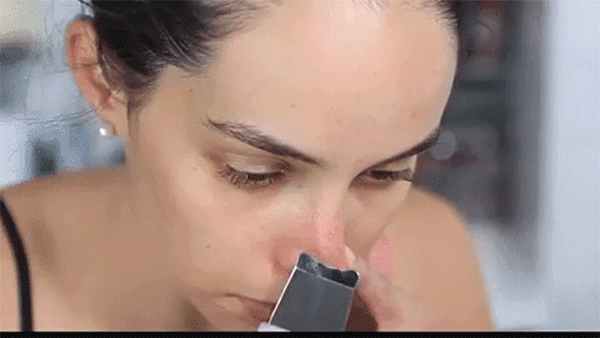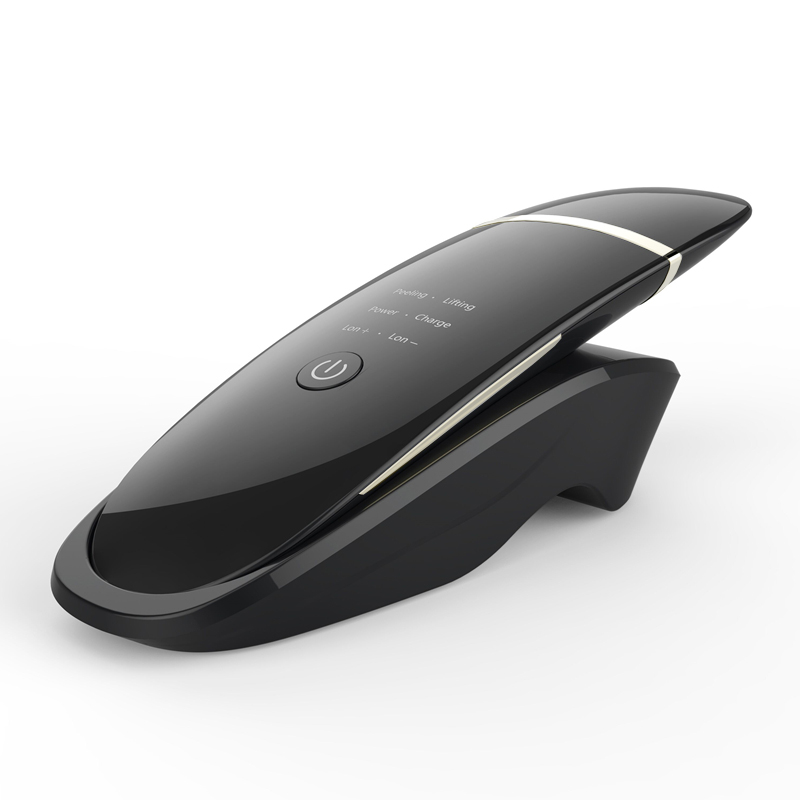Facial care
Facial scrub - Should you use facial scrub for facial cleansing?
Table of contents
To exfoliate the face med en ansiktsskrubb är viktigt för att få en livfull och strålande hud i alla åldrar, men nästan hälften av kvinnorna avslöjar att de hoppar över detta steg i sin hudvårdsrutin, enligt en undersökning från Good Housekeeping. ”Exfoliering är processen där man tar bort döda celler i stratum corneum, det översta lagret av huden, för att öka cellomsättningen”, förklarar Beauty Lab-kemisten Danusia Wnek. Exfoliering kan få huden att se slätare, ljusare, klarare och mer strålande ut, både omedelbart och långsiktigt.
What type of facial scrub is best for me?
There are generally two classic types of facial scrubs, physical (also called mechanical) and chemical formulations, in addition to these two methods there is also a new method of facial scrubs that is being used more and more by clinics around the world that is much more effective and gentle than any other method that has been available in the past. This new method originated in South Korea (K-Beauty) and was previously used mostly by Korean celebrities.
Physical and older methods of exfoliation use particles or granules or devices such as cleansing brushes to physically rub away the dead cells on the skin. Chemical exfoliators exfoliate the skin using chemicals (such as salicylic acid and retinoids) that loosen the bonds between dead skin cells so they can detach.
Ultrasonic face scrub
När du hör ”Ultraljuds ansiktsskrubb” tänker du troligen på en av de vibrerande gummiblandningar som används för att rengöra ditt face. While these facial scrubs are wonderful in their own right, they are not actually ultrasonic facial scrubs. Instead, ultrasonic facial scrubs are metals that are used to deeply unclog pores and cleanse the skin, leading to what many consider to be the cleanest method possible. But the question that so many ask is: Do they really work?


Below, with the help of dermatologist Dr. Michele Green and dermatologist Dr. Scott Paviol, discover everything there is to know about ultrasonic facial scrubbers, including whether you should use one to clean your face not.
What is an ultrasound face scrub?
Ultrasonic facial scrubs, are devices that use high-frequency frequencies to collect dirt and oil from pores.
If you thought an ultrasonic face scrub cleanses the skin using vibrations, you're right. But instead of a rubber form, these scrubs are made of metal and use high-frequency vibrations via sound waves to transform the skin from cell to cell.
”Cellerna börjar ’prata’ med varandra och dina porer öppnas vidöppet, så smuts och skräp vibreras försiktigt och skrubbas bort”, förklarar Green.
On the whole, these scrubbers are just another way to exfoliate huden. ”På samma sätt som en Clarisonic-borste använder sig av vibrationer med sin borstmekanism, eller Foreo-ansiktsborsten (en ansiktsborste i silikon) använder sig av vibrationer för djuprengöring, gör en ultraljuds ansiktsskrubb samma sak, bara genom ultraljudsljudvågor (i huvudsak högfrekventa vibrationer)”, förklarar Paviol.
The benefits of ultrasound facial scrubs
- Deeply cleanses the skin
- Exfoliates the skin
- Reduces pores
- Improves skin texture and tone
- Gentler than other forms of exfoliation
Although pores can't actually shrink in size, as they're genetically predetermined - Green says a deep cleansing facial scrub can remove even the most stubborn dirt, making pores look less stretched out.
Removing any build-up also allows nutrients to better penetrate the skin, which Green says helps improve texture and tone, often leading to smoother, brighter skin overall.
Different skin types
En av de största fördelarna med en ultraljuds ansiktsskrubb är att den är en av de mest skonsamma formerna av exfoliering som finns på marknaden. Paviol säger att de är särskilt bra för dem som inte reagerar bra på andra exfolieringsmetoder, som borstar eller kemiska peelingar. ”ultraljuds ansiktsskrubb är en utmärkt behandling för dem med känslig, överreaktiv, rosacea benägen eller akneaktig hudtyp”, förklarar han. ”Även om mikrodermabrasion är en kultklassiker för djup exfoliering används kristaller eller en diamantspets, plus vakuumsugen med negativt tryck som kan orsaka rodnad och kan vidga eller bryta kapillärer beroende på hur känslig någons hud är.”
Disadvantages of ultrasound face scrub
As gentle and exciting as ultrasonic facial scrubs are, they are not so gentle that they can be used continuously.
”Kunder som har köpt ultraljuds ansiktsskrubb för hemmabruk [kan bli så] upphetsade av att se oljan lyfta upp från huden att de överanvänder apparaten eller använder den för aggressivt, vilket kan leda till onödig sensibilisering eller skada på huden”, förklarar han. Med detta i åtanke är det viktigt att komma ihåg att ultraljuds ansiktsskrubb först och främst är exfolieringsapparater. Som sådan är det viktigt att inte använda dem morgon och kväll, varje dag i veckan, precis som du inte skulle göra med vanliga ansiktsskrubb, borstar eller vissa kemiska exfolieringsmedel.
”Det finns många alternativ av ultraljuds ansiktsskrubb och dessa apparater är säkra att använda om användarna följer bruksanvisningen noggrant”, säger hon. ”Den enda nackdelen är användarens förmåga att följa instruktionerna noggrant utan att skada huden.”
Use
As Paviol points out, ultrasonic facial scrubs are water-based exfoliators. For it to work, it must be flat in shape and used while the skin is wet, which allows the ultrasonic vibrations to form and build up.
The exact use varies from machine to machine (so it is important to read the instructions), but as a general rule of thumb, the ultrasound face scrub should be used as follows.
- Bleeds the skin. Remember: an ultrasonic face scrub only works if the skin is wet.
- Run the plate along the skin. Gently press the plate along your skin in an upward and/or outward motion. For example, if you are scrubbing your forehead, start between your brows and press upwards. Although the actual direction of the appliance may change, we recommend going upwards and outwards, as this prevents debris from potentially collecting in creases around the nostrils, into the brows and so on.
- Move slowly if you are trying to extract. Running the device along your forehead and cheeks will greatly improve the appearance of your skin, but if you have blackheads, the slower you go, the deeper and more effective the facial scrub's effects will be.
- Follow up with your usual skincare routine. Once you're done scrubbing, cleanse, tone and moisturize as you normally would. If you don't usually tone, it's good to know that it will help close your pores to keep them fresher for longer.
- Clean your face scrub when you're done.
How often to use?
As with regular exfoliation - whether you use a face scrub or a brush - Green says it's best to use an ultrasonic face scrub no more than two to three times a week. She suggests watching how your skin reacts and increasing or decreasing use from there.
Best ultrasonic face scrub
Vivre® Premium Ultrasonic Facial Scrub & Peeling
Här har vi Paviols favorit. ”Det är ett superfint alternativ som exfolierar the face och stramar upp och lyfter huden med hjälp av mikroströmspulser och intermittent ultraljudsteknik”, säger han. ”Det positiva jonläget i dessa enheter tar bort överflödiga ansamlingar, smuts och olja och rengör huden på djupet, medan det negativa jonläget (du behöver vända spateln och använda den i en uppåtgående rörelse) används för produktpenetration och hudlyftning, vilket ger en lätt massage som hjälper huden att lätt absorbera hudvårdsingredienserna du har applicerat.” Med det sagt är hans favoritdel med Vivre® Premium Ultrasonic att den också använder blå LED-terapi. ”Blått ljus är fantastiskt för att lyft. Aknes-bakterier som orsakar akne, och det minskar inflammation och kan hjälpa till att minska utseendet på akneärr”, tillägger han.


